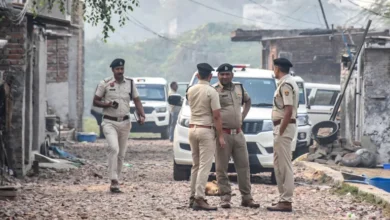The Asian giant’s 267-million-USD ‘Mission Mausam’ will be a gamechanger

The Indian government led by Prime Minister Narendra Modi has green-lighted ‘Mission Mausam,’ a transformative initiative with a funding allocation of INR 2,000 crore ($267 million) over the next two years.
Mission Mausam, spearheaded by the Ministry of Earth Sciences, aims to revolutionize India’s weather and climate science, research, and services.
Notably, according to the Global Climate Risk Index 2021, India is the 7th most affected nation due to climate change.
This ambitious project is designed to enhance the nation’s capability to address extreme weather events and the impacts of climate change, thereby strengthening community resilience across various sectors and ecosystems.
The initiative will significantly advance research and development in atmospheric sciences, focusing on weather surveillance, modelling, forecasting, and management.
By incorporating advanced observation systems, high-performance computing, and state-of-the-art technologies such as artificial intelligence and machine learning, Mission Mausam aims to set new standards in weather prediction accuracy.
Key objectives of Mission Mausam include improving the precision and timeliness of weather and climate information, covering aspects like monsoon forecasts, air quality alerts, extreme weather warnings, and interventions for managing fog, hail, and rain.
The mission will also emphasize capacity building and public awareness, as per the government.
To achieve these goals, Mission Mausam will deploy next-generation radars, satellite systems with advanced sensors, and high-performance supercomputers.
It will also focus on developing improved Earth system models and a GIS-based automated Decision Support System for real-time data dissemination.
The project promises to benefit a wide range of sectors, including agriculture, disaster management, defence, environment, aviation, water resources, power, tourism, shipping, transport, energy, and health.
Additionally, it will enhance data-driven decision-making in urban planning, road and rail transport, offshore operations, and environmental monitoring.
Three key institutions under the Ministry of Earth Sciences (MoES) — the India Meteorological Department, the Indian Institute of Tropical Meteorology, and the National Centre for Medium-Range Weather Forecasting — will primarily oversee the implementation of Mission Mausam.
They will be supported by other MoES institutions such as the Indian National Centre for Ocean Information Services, the National Centre for Polar and Ocean Research, and the National Institute of Ocean Technology, along with national and international partners, including academic and industrial collaborators.
This initiative aims to strengthen India’s leadership in weather and climate sciences and services.
According to Indian School of Climate Policy, in August 2022, under the Chairmanship of the Prime Minister the ministry passed the updated Nationally Determined Contribution (NDC) for consideration by the United Nations Framework Convention on Climate Change (UNFCCC) under the Paris Agreement, to reach India’s goal of net zero emissions by 2070. This was a translation of the Panchamrit (five nectar elements) – India’s action plan against climate change, announced at COP 26 in Glasgow, United Kingdom.
According to a report by Oneindia, India will install around 70 new Doppler radars under the Mission Mausam project to enhance weather prediction accuracy at the panchayat level.
Officials of the MoES have said that the project aims to improve short-to medium-range forecast precision by five to 10 percent.
According to the Oneindia report, MoES secretary M Ravichandran announced that the five-year Mission Mausam will be executed in two phases.
The first phase of the mission, which will run for two years until March 2026, focuses on expanding the observation network, which includes adding around 70 Doppler radars and 10 wind profilers.
The Indian Cabinet led by Prime Minister Narendra Modi approved $267 million for this phase, which also involves establishing a cloud chamber at the Indian Institute of Tropical Meteorology in Pune to study cloud processes.
In the first phase of Mission Mausam, 60 to 70 new radars will be installed within 18 months, building on the 39 existing Doppler radars.
This phase will also see the addition of ten wind profilers and ten radio meters.
According to the MoES secretary, an Observing System Simulation Experiment (OSSE) will be conducted during this phase to assess future observation requirements.
OSSE is a method used to assess and optimize observational systems by simulating their performance under various conditions.
The OSSE involves creating a virtual model of the atmosphere or other relevant systems and then integrating simulated observations into this model to evaluate how well different observation strategies would perform.
This approach helps in understanding the effectiveness of new technologies or methods before they are deployed in real-world settings, guiding decisions on the design and implementation of observational systems.
Meanwhile, the second phase of Mission Mausam will focus on integrating satellites and aircraft to enhance observational capabilities.
Over the next five years, institutions such as the India Meteorological Department, the Indian Institute of Tropical Meteorology, and the National Centre for Medium-Range Weather Forecasting will collaborate to advance understanding of weather and climate processes and improve forecasting accuracy.
Mission Mausam aims to boost short- to medium-range weather forecast accuracy by 5 to 10 percent and enhance air quality predictions in major metro cities by up to 10 percent, according to reports.
It will enable weather predictions at the panchayat (village governing body) level with a lead time of 10 to 15 days and increase the frequency of nowcasts from every three hours to every hour, reports said.
Nowcasts provide very short-term predictions essential for tracking rapidly changing weather conditions like thunderstorms and heavy rain.
As per experts, tropical weather forecasting remains difficult due to the complexity of atmospheric processes and the limitations of current observation and model resolutions.
Observational data is limited both spatially and temporally. With Numerical Weather Prediction (NWP) models currently operating at a 12-kilometre horizontal resolution, accurately predicting small-scale weather events in India is challenging.
Climate change is exacerbating these difficulties by creating more erratic atmospheric conditions, leading to both intense localized rainfall and droughts.
The simultaneous occurrence of flooding and drought, along with poorly understood phenomena such as cloudbursts, thunderstorms, lightning, and squalls, further complicates forecasting.
To better understand these patterns, detailed knowledge of physical processes within clouds, at the surface, in the upper atmosphere, over oceans, and in polar regions is required.
The MoES has highlighted the need for high-frequency observations at ground level and across the Earth’s system with improved spatial and vertical resolutions.
Upgrading the horizontal resolution of NWP models from 12 kilometres to 6 kilometres is crucial for producing accurate forecasts at the panchayat level, reports Oneindia, quoting top MoES officials.
Mission Mausam addresses these challenges through a comprehensive approach, focusing on enhancing observational capabilities and improving weather prediction accuracy across India, according to Oneindia report.












